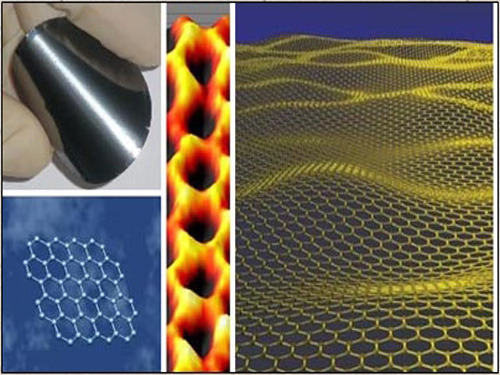
If a graphene with a thickness equal to one hundred thousandth of the diameter of a person's hair is stacked and thickened into plastic wrap, the pressure of an elephant standing on a pencil is required to pierce it.
This material, which is currently known to be the thinnest, hardest, and the most conductive and conductive material, has been discovered in a short span of ten years and has become a hot new material for science in various countries. At present, many coastal areas in China are ambitious to prepare their own graphene industrialization projects.
As one of China's most authoritative researchers in the field, Liu Zhongfan, a member of the Chinese Academy of Sciences and a professor at the School of Chemistry and Molecular Engineering of Peking University, received an interview on the progress of graphene research in China and the industry.
He believes that although graphene is still in the basic research stage, it may indeed have broad space for development in key areas such as energy, environment, aerospace, and military, and graphene research has taken the lead in the world as a major carbon material research country in China.
However, Liu Zhongfan said that the current understanding of the prospect of graphene is not yet clear.
Paper-thin lightweight body armor Xiao Bian: What is graphene?
Liu Zhongfan: Graphene is the first two-dimensional atom crystal found by humans. First of all, it is one of the thinnest substances in the world. It is equivalent to only one hundred thousandth of the diameter of human hair. Even so, graphene is the most solid substance in the world, and is more than 100 times stronger than steel.
In other respects, graphene has very good electrical conductivity and thermal conductivity. It can be said that its emergence has refreshed the human understanding of the material world and the microcosm, and it has also opened up a vast new world for researchers.
So after the graphene was discovered for only six years, that is, in 2010, its discoverer won the Nobel Prize in physics, which is also rare in the history of the Nobel Prize.
Xiaobian: What can graphene be used for?
Liu Zhongfan: As an emerging nanomaterial, the application prospect of graphene is not very clear. At present, most of the research on graphene is still in the basic research stage of the laboratory, but some applications have begun to emerge, such as the distance not far behind in the daily use of electronic devices.
Nowadays, concepts such as flexible electronics and wearable devices are very popular, but the fragile screens of mobile phones and iPads are short boards. Graphene has good flexibility and can be bent without breaking performance. Graphene can also be used as an electrode for flexible batteries. If this idea is achieved, then our mobile phone will be as thin as a piece of paper and have a screen as large as an iPad. When not in use, it can be folded into the pocket. The curvature of the wearable device can also be adjusted to fit the body perfectly.
Shampoo Unit,Salon Backwash Unit,Shampoo Backwash Unit,Salon Shampoo Backwash Units
TOM SPA BEAUTY SALON EQUIPMENT CO.,LTD , https://www.tomspabeauty.com